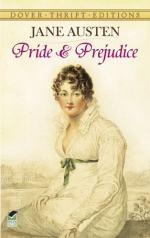|
This section contains 15,372 words (approx. 52 pages at 300 words per page) |

|
SOURCE: Neumann, Anne Waldron. “Characterization and Comment in Pride and Prejudice: Free Indirect Discourse and ‘Double-voiced’ Verbs of Speaking, Thinking, and Feeling.” Style 20, no. 3 (fall 1986): 364-94.
In the following essay, Neumann studies the speech and thought of Pride and Prejudice, calling attention to Austen's use of “double-voiced verbs,” or verbs that “conflate narration with reported discourse.”
I. Introduction
Since so much of an Austen novel is apparently “shown” or dramatized rather than “told” or narrated, it becomes of particular interest not just to trace how Austen reports the speech and thought of her characters but also to consider when and how judgments on the characters' consciousnesses are implied as well as stated. The following study uses Pride and Prejudice to illustrate one aspect of how Austen creates consciousnesses for her characters by rendering and describing their speech and thought in what Mikhail Bakhtin, in his “Discourse Typology in...
|
This section contains 15,372 words (approx. 52 pages at 300 words per page) |

|


